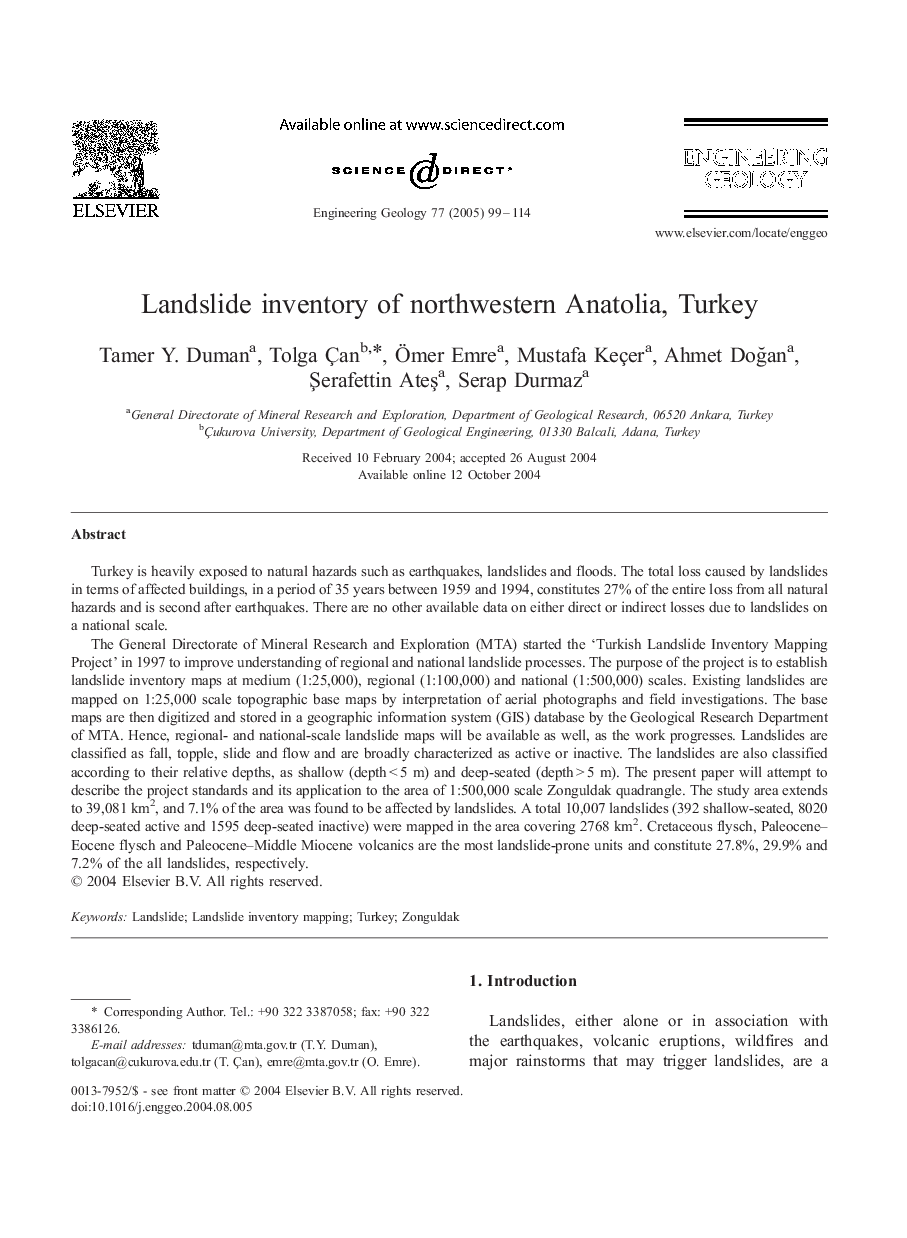| Article ID | Journal | Published Year | Pages | File Type |
|---|---|---|---|---|
| 9538103 | Engineering Geology | 2005 | 16 Pages |
Abstract
The General Directorate of Mineral Research and Exploration (MTA) started the 'Turkish Landslide Inventory Mapping Project' in 1997 to improve understanding of regional and national landslide processes. The purpose of the project is to establish landslide inventory maps at medium (1:25,000), regional (1:100,000) and national (1:500,000) scales. Existing landslides are mapped on 1:25,000 scale topographic base maps by interpretation of aerial photographs and field investigations. The base maps are then digitized and stored in a geographic information system (GIS) database by the Geological Research Department of MTA. Hence, regional- and national-scale landslide maps will be available as well, as the work progresses. Landslides are classified as fall, topple, slide and flow and are broadly characterized as active or inactive. The landslides are also classified according to their relative depths, as shallow (depth<5 m) and deep-seated (depth>5 m). The present paper will attempt to describe the project standards and its application to the area of 1:500,000 scale Zonguldak quadrangle. The study area extends to 39,081 km2, and 7.1% of the area was found to be affected by landslides. A total 10,007 landslides (392 shallow-seated, 8020 deep-seated active and 1595 deep-seated inactive) were mapped in the area covering 2768 km2. Cretaceous flysch, Paleocene-Eocene flysch and Paleocene-Middle Miocene volcanics are the most landslide-prone units and constitute 27.8%, 29.9% and 7.2% of the all landslides, respectively.
Related Topics
Physical Sciences and Engineering
Earth and Planetary Sciences
Geotechnical Engineering and Engineering Geology
Authors
Tamer Y. Duman, Tolga Ãan, Ãmer Emre, Mustafa Keçer, Ahmet DoÄan, Åerafettin AteÅ, Serap Durmaz,
